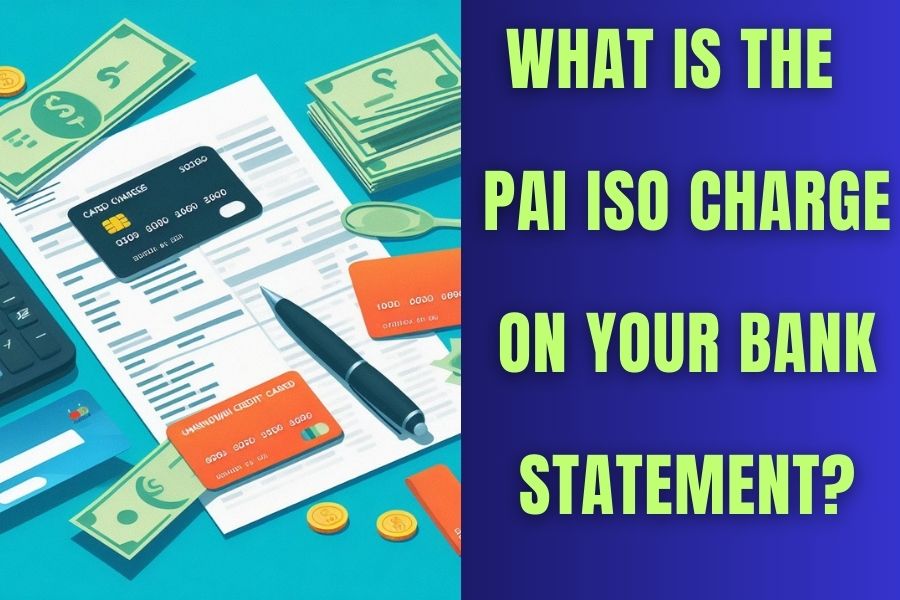Many people often get confused when they see the “PAI ISO” charge on their bank statements and want to know what it means.
“PAI ISO” stands for “Payment Alliance International Interchange Service Organisation,” or simply PAI ISO. To grasp the costs associated with debit and ATM card transactions, it’s important to understand this term.
It’s essential to know that the “PAI ISO” charge isn’t a rare thing – many bank customers experience it. Understanding that it’s a common issue is the first step in figuring out this financial puzzle.
Let’s explore the details of the often-seen PAI charge together.
What Is the PAI ISO Bank Charge?
The PAI ISO charge is a fee that banks charge for using debit or ATM cards. Banks and other financial institutions apply the PAI ISO charge which originates with the payment processor and is subsequently forwarded to the bank when processing debit or ATM card transactions.
The amount of the PAI ISO charge may differ based on the specific bank and the nature of the transaction, typically represented as a small percentage of the total transaction amount. Variations in charge amount contribute to the multifaceted landscape of this fee across different banking institutions and transaction types.
How Does the PAI ISO Charge Appear on a Statement?
A bank statement will show the PAI ISO charge as a cost related to ATM or debit card transactions. Payment Alliance International (PAI), the payment processor, charges the merchant a fee when you use your debit or ATM card to purchase. The PAI ISO charge results from transferring this fee to your bank or other financial institution.
The PAI charge and transaction details are separate line items on your bank statement. The description of the charge may vary slightly depending on your bank but often includes terms like “PAI ISO,” “ISPA/PIMDS Withdrawal PAI ISO,” or simply “Payment Alliance International.” Examples of variations include “PAI ISO ATM Withdrawal,” “ATM Debit PAI ISO,” or other similar descriptions.
The charge amount represents the expenses for processing electronic payments, including maintenance, system upgrades, and payment processing company fees. It is subtracted from the total transaction amount.
The expenses may accumulate even though they usually represent a small percentage of the purchase, mainly if you use your card frequently.
How to Manage an Unknown PAI ISO Bank Charge
If you identify an unknown PAI ISO charge on your bank statement, follow these steps to effectively manage the situation:
Contact Your Bank or Financial Institution:
Contact your financial institution or bank as soon as possible. Ask questions regarding the PAI ISO Bank charge and how it was applied to your account. They would be able to clarify any errors or mistakes during processing.
Verify the Charge:
Once you have information about the charge, verify its legitimacy. Check your records to confirm whether you made the transaction or if unauthorized card use is possible. If you suspect fraud, report it to your bank immediately.
Dispute the Charge:
If you believe the charge is incorrect or fraudulent, initiate a dispute with your bank. They will investigate the matter and determine whether the account should be reversed or if further action is necessary.
Take Preventative Measures:
To prevent future unknown charges, regularly monitor your account for suspicious activity. Safeguard your debit and ATM cards, and consider alternative payment methods when possible.
Seek Professional Assistance:
If resolving the issue with your bank proves challenging, seek assistance from a consumer protection agency or financial advisor. Professionals can guide in determining the matter effectively.
Take charge of your financial security by taking quick action to resolve any unidentified PAI ISO charges. This will give you peace of mind and protect your accounts from potential risks.
Frequently Asked Questions
The term “ISO charges” may also be used in a broader context to denote fees related to compliance, certification, or adherence to ISO standards in different business processes.
Pai ATM” refers to ATMs associated with Payment Alliance International (PAI). PAI is a prominent company in the financial services industry, specializing in ATM and electronic payment processing. The term “Pai ATM” may specifically denote ATMs operated or processed by Payment Alliance International, which operates one of the largest ATM networks in the United States.
PAI ISO actively uses robust security measures to reduce the risk of fraud, giving customers an extra layer of security at their ATMs. PAI works with local law enforcement and the U.S. Secret Service to combat fraud, focusing on “man-in-the-middle” attacks on ATMs.
Conclusion
In conclusion, understanding the “PAI ISO” charge on your bank statement is crucial for informed financial management. The prevalence of this fee, often associated with debit and ATM card transactions, requires prompt attention and action.
People can keep financial control and avoid problems by promptly addressing and managing unexpected bank charges. A proactive strategy for anyone hoping to prevent PAI ISO fees in the future would be to investigate other payment options, like cash or different card kinds.
Staying vigilant and regularly monitoring financial transactions contribute to a secure and transparent banking experience.
Find Relevant Charges Information Here
What are GPC EFT Transactions On My Bank Statement?
What Is AGI TMO Service Fees Charge On Bank Statement?
.

